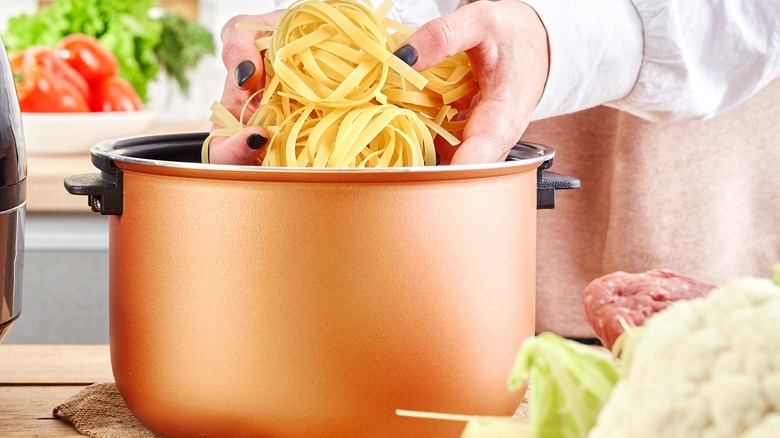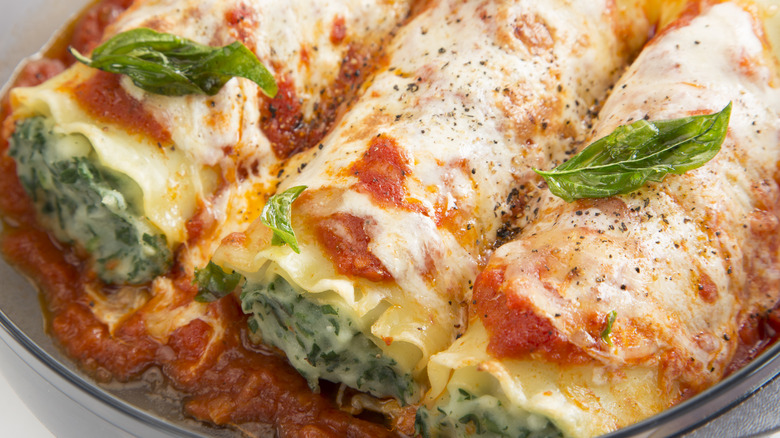Why You Should Think Twice Before Slow-Cooking Pasta In Sauce
There aren't many dishes as delicious and comforting as a slow cooked meal. With longer cooking times and lower temperatures, the flavors permeate better, and the food stews rather than burning and drying up. Slow cooker meals are comprised of warm, hearty dishes that are both rich and flavorful. Yet, while the slow cooking method is beneficial to some components of a meal, it can be detrimental to other parts of it.
Simmering pasta sauce for longer gives it a deeper, richer taste. However, the pasta itself doesn't always benefit from that same treatment. Preparing pasta in the slow cooker can often result in soggy, shapeless noodles. Instead, it's best to boil pasta separately and spoon the slow-cooked sauce over the noodles.
Pasta tastes delicious when it's heated in the sauce, giving it the chance to properly take in the flavors. While some noodles end up as mush in the slow cooker, there are certain types of noodles that are suited for the device.
Choose these noodles when slow cooking pasta
Softer varieties of noodles that cook quickly aren't going to be the best option when using the slow cooker. Angel hair, farfalle, and rotini will quickly fall apart if cooked for an extended period of time. Opt instead for the types of pasta that can be baked in the oven, like ziti or lasagna sheets. Still, keep an eye on the slow cooker to make sure the noodles don't become too soft. Within 3 to 4 hours, they should be finished cooking.
If you want to achieve that same rich, hearty taste while using pasta that can't be made in the slow cooker, try boiling it directly in the sauce. The one-pot meal method perfectly coats the pasta in the sauce while making the dish more flavorful. Although it will take slightly longer for the pasta to cook, patience and a small amount of water added to the sauce will produce rich, al dente pasta.

